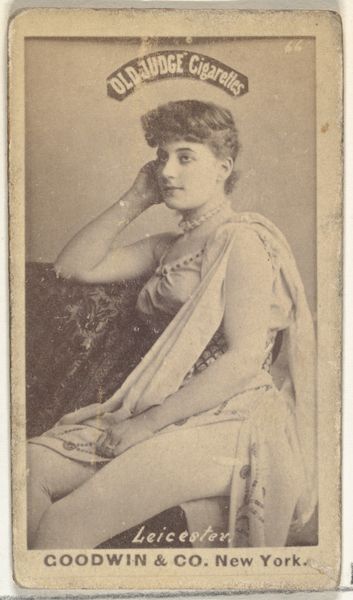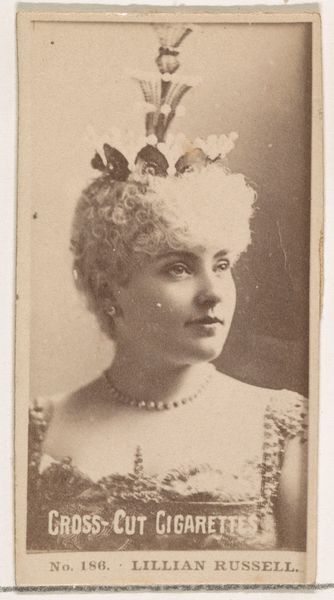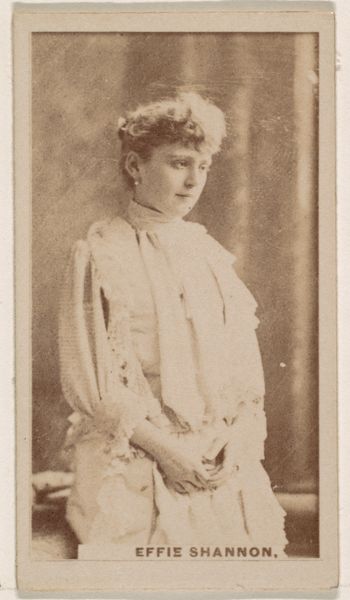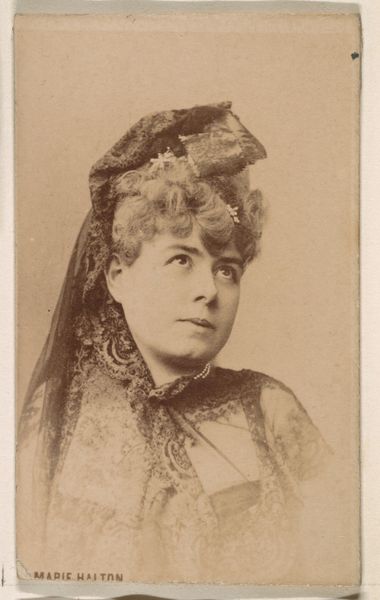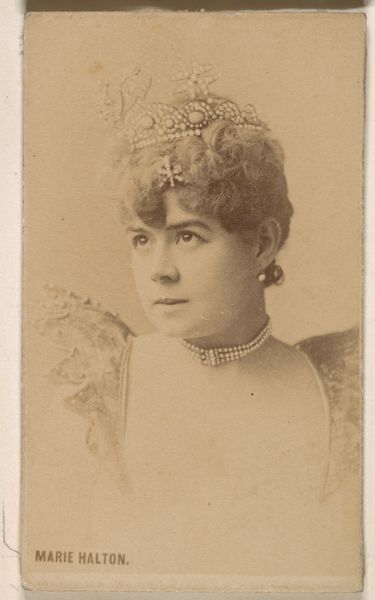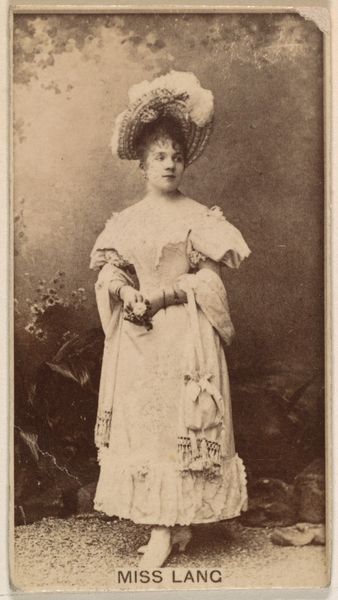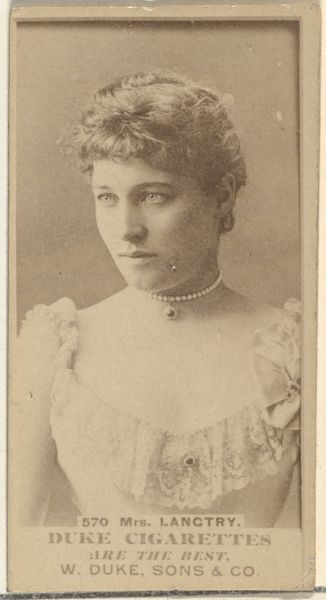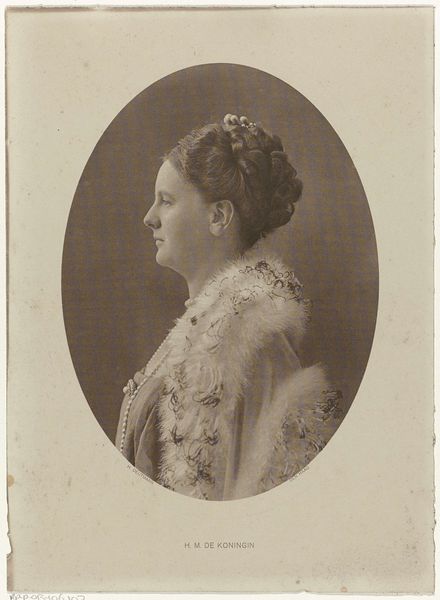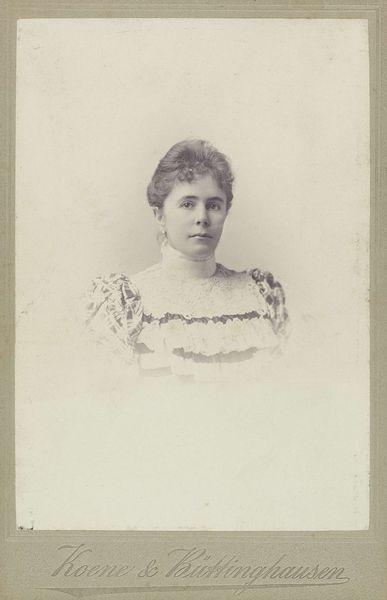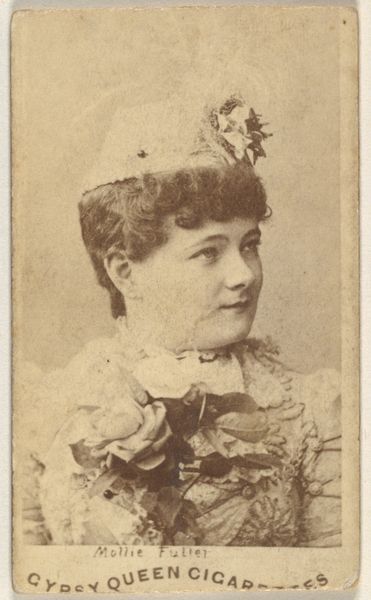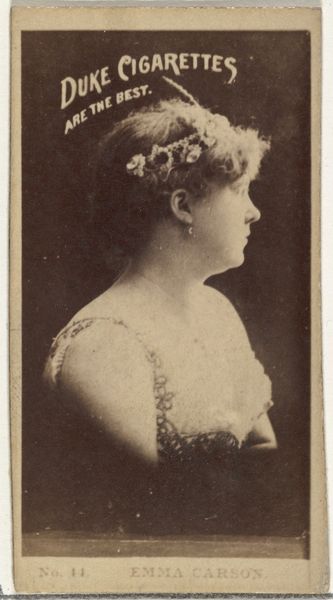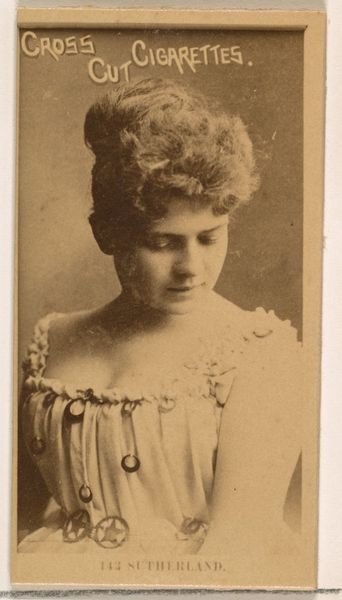
Card Number 206, Leicester, from the Actors and Actresses series (N145-1) issued by Duke Sons & Co. to promote Cross Cut Cigarettes 1880s
0:00
0:00
drawing, print, photography
#
portrait
#
drawing
# print
#
photography
#
19th century
#
men
Dimensions: Sheet: 2 1/2 × 1 3/8 in. (6.4 × 3.5 cm)
Copyright: Public Domain
Editor: This is "Card Number 206, Leicester" from the Actors and Actresses series, created in the 1880s by W. Duke, Sons & Co. It’s a promotional card for Cross Cut Cigarettes, using drawing and photography. I’m struck by how detailed it is for a small commercial item, especially her jewelry. What do you see as particularly significant about this piece? Curator: I'm fascinated by these types of cards as windows into the burgeoning consumer culture of the late 19th century. Let’s consider it first as a physical object: a mass-produced card, distributed with cigarettes, designed to entice consumers. What does it reveal about the relationship between art, advertising, and consumption? Editor: So it's not about the artistry as much as it's about how it functioned in society? Curator: Precisely. Look at the way this image, a portrait mimicking the style of high art portraiture, becomes a tool to elevate a mundane product – cigarettes. What does this tell us about how industries were trying to market to the burgeoning middle class? The materials themselves – the cardstock, the ink – were produced through industrial processes. And the subject, a woman presumably an actress, reinforces societal roles and expectations. Editor: It’s interesting to think about it as part of a larger system of production and consumption, rather than just a pretty picture. Curator: Absolutely. Think about the labor involved in creating and distributing these cards. Who printed them? Who packaged them with the cigarettes? This seemingly insignificant card holds layers of economic and social information. It’s about materiality, labor, and the shaping of consumer desires. Editor: So much more than just a portrait! It really makes you consider the whole context surrounding the object. Curator: Exactly. Looking at art through this lens, we see how deeply intertwined it is with the economic and social forces that shape our world.
Comments
No comments
Be the first to comment and join the conversation on the ultimate creative platform.
